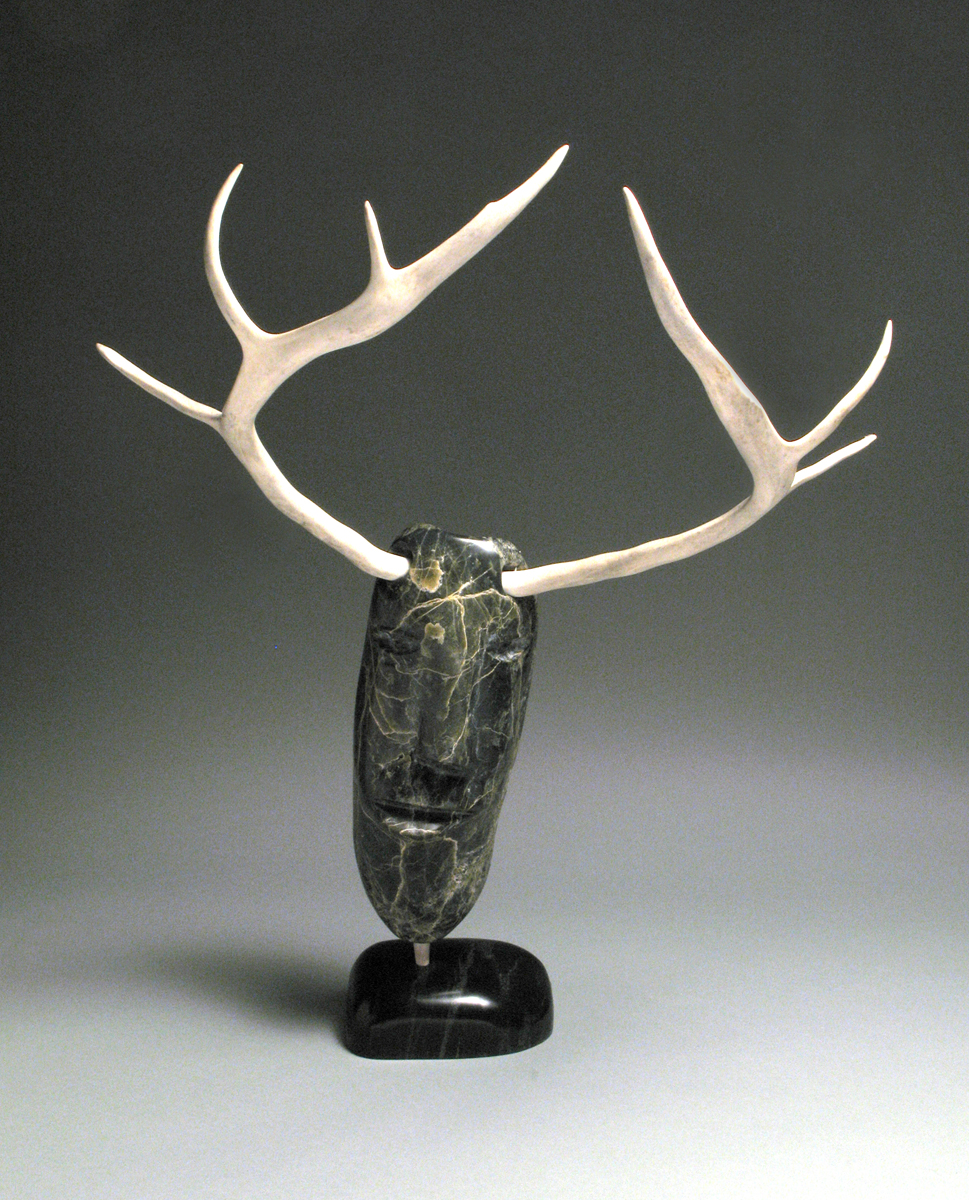
Arnaqu Ashevak, MY PERSONAL DEMON, Cape Dorset, 2007, Stone, antler, metal, 23.75 x 19.5 x 10″
Exhibition opened June 11, 2010
Feheley Fine Arts is pleased to present an exhibition that focuses on the innovative ways that contemporary Inuit artists are approaching their work. This group of sculptures and graphics depicts both cutting-edge themes in Inuit art and original artistic techniques. Increasingly, many Inuit artists are living in urban centres. Living in the ‘south’ has opened the door to changes in the work of many artists. Although artists living and working in the south face many challenges, there are several positive aspects. For one, artists have a large variety of materials available to them. For carvers a more diverse selection of stone allows for more flexibility in an artist’s work. Urban life also provides access to a network of other artists and art galleries, which are vital for artistic support and encouragement.
Alec Tuckatuck and Idris Moss-Davies are two sculptors who live and work in the south. Their work often experiments with different types of stone, with highlights of traditional materials like antler, baleen and muskox horn. Tuckatuck’s LUMACK is one example of a traditional theme the artist has handled in an innovative manner. He selected a pink-toned stone from Kenya and in a very modern composition, has emphasized the main characters faces that buttress the whale in the middle. Moss-Davies works with a delicate hand to create sculptures such as DRUMMER, whose finely carved face and detailed hands give the sculpture an understated subtleness. Even more known for experimentation with media are artist brothers David Ruben Piqtoukun and Abraham Apakark Anghik. Both artists often challenge expectations of Inuit art, not only with their choice of material, but with innovative subject matter too. Adam Alorut is another emerging artist worth watching. Adam began carving under the guidance of his father, Morris Alorut, when he was a young boy. His highly detailed sculptures are often intricately intercarved. They treat a variety of themes from devils and dragons, to shamans and animals. TOTEM is one of the artist’s most recent creations, and its fine attention to each figure is testament to the artist’s talented hand.
Innovative approaches in Inuit art are not limited to sculpture. Not only are many graphics produced with cutting-edge printmaking techniques, they also often contain scenes influenced by southern culture. For decades Pudlo Pudlat was perhaps, the only artist to include imagery of technology such as planes and helicopters; at the time a new arrival to the North. Today, some artists are documenting the world around them, while others are remembering a time past. Shuvinai Ashoona often recalls old boats like the C.D. Howe or the Nascopie, ships that for generations were the only point of contact with the south for many Inuit. Presently, most northern homes are outfitted with TV and Internet, and ATVs and snowmobiles are used prominently throughout northern communities. Consequently, these technologies have worked their way into many artists’ work, as seen in Tim Pitsiulak’s FAMILY OF EIGHT that depicts all the members of family on board an all terrain vehicle.
